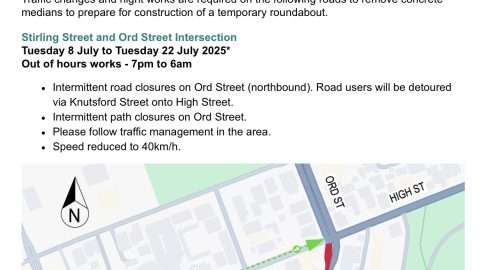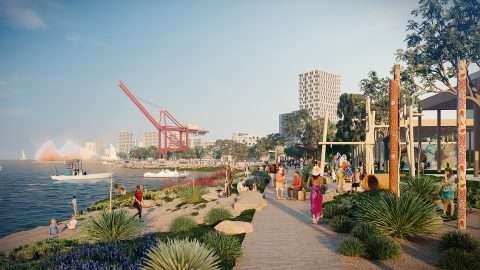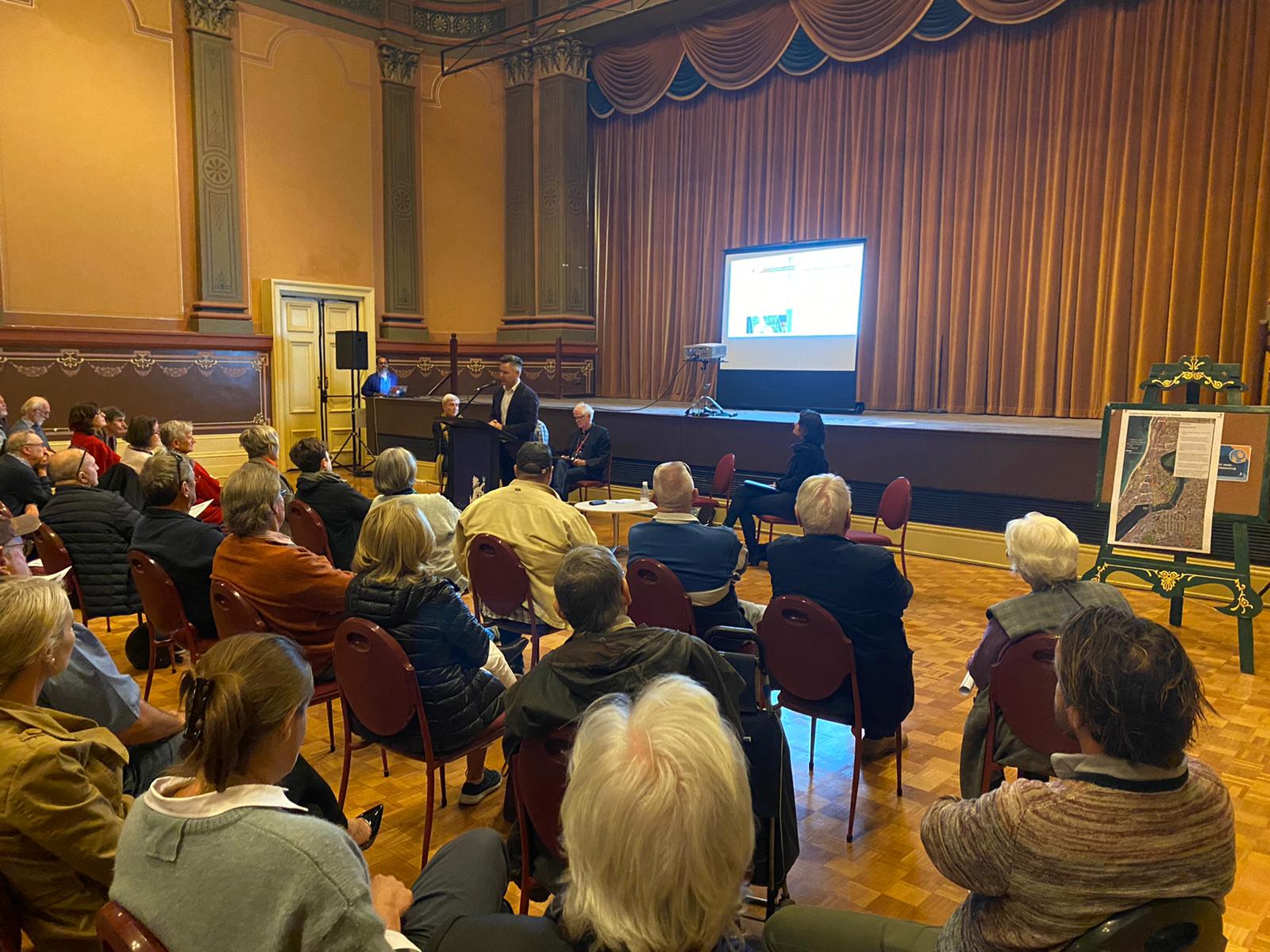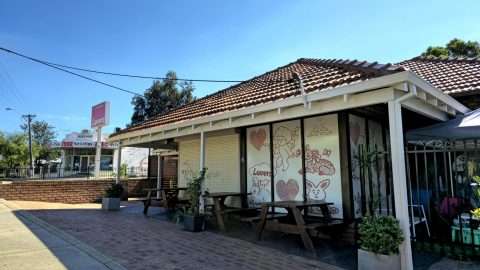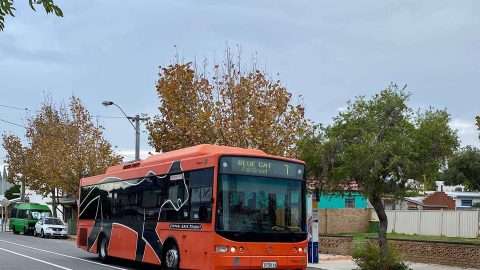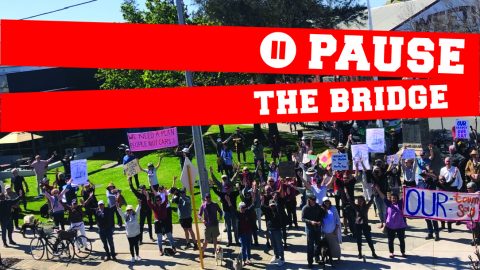Imagining Freo’s future.
That’s now the name of the game.
The future use and development of the whole Inner Harbour Port area of Fremantle is up for consideration. What’s to become of it?
The answer to that question will undoubtedly reverberate throughout the CBD of Fremantle and beyond for generations to come. Perhaps not since C Y O’Connor was charged with the responsibility of creating the Inner Harbour out of the mouth of the Derbarl Yerrigan/Swan River way back in the 1890s, has such a big question been posed.
The State Government Department of Planning, Lands and Heritage has just released a Tender Request that’s intended to get underway big time the process of imagining, or reimagining, Fremantle’s future.

The whole thing is to be driven by an Economic Development Strategy and Land Use Plan.
And it’s pretty clear that Dreamers have an important part to play in the process – thank goodness! This is no doubt where Freo people will come into their own.
The project has the potential to be one of the most significant coastal urban developments, if not the most significant urban coastal development the State has ever seen, and arguably the most ambitious planning project Fremantle has seen since John Septimus Roe set about preparing the 1833 plan for Fremantle, and the most significant development since C Y O’Connor oversaw the creation of the Inner Harbour that was officially opened for business in 1897.
Vision and ambition are the bywords for what lies ahead.

Inner Harbour with Victoria Quay and North Quay
But first some immediate background to the project.
In June 2021, the McGowan Labor Government announced plans to create the Future of Fremantle Planning Committee (FFPC), to be established for two years under the Planning and Development Act 2005 as a sub-committee of the WAPC – Western Australian Planning Commission.
Establishment of the FFPC followed the State Government’s decision in August 2020 to develop a business case to relocate port operations from the Fremantle Inner Harbour to Kwinana.
The FFPC is supported by a Reference Group and independent Strategic Advisor and is tasked with exploring redevelopment options for North Quay, Victoria Quay and the surrounding area, with a focus on identifying opportunities for new land uses, economic development and job creation.
The Economic Development Strategy is intended to provide strategies for bringing economic growth, investment and employment into Fremantle. It is to be future focussed, taking into account emerging sectors, state-wide opportunities, and national and global connections. It is to set the scene for and inform the Land Use Plan.
The Land Use Plan, as explained in the Tender, is intended to communicate a ‘compelling vision’ for the transformation of the Port land that builds on the ‘unique identity of Fremantle’ – a vision that is shared by the community and is supported by highly effective strategies to bring it to life. As the tender document puts it, it ‘will provide for a highly integrated land use, transport and infrastructure response that demonstrates a deep understanding of the interrelationships between how we live, work and move around.’
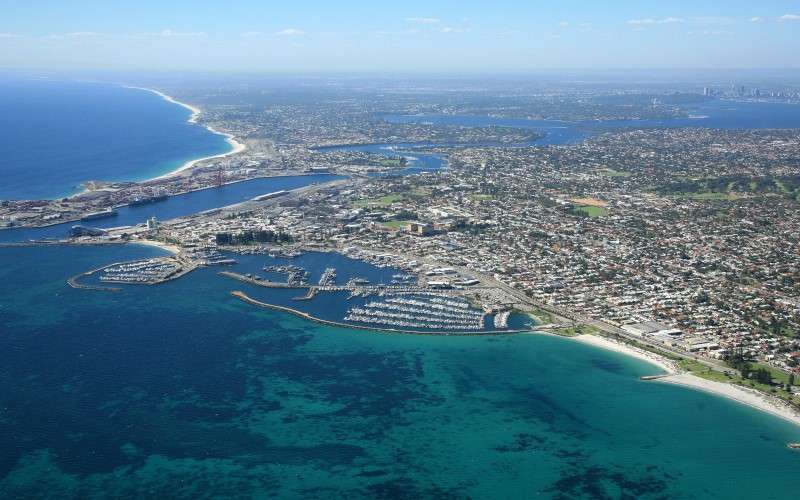
The Future of Fremantle project area is located within the City of Fremantle.
Here it is.
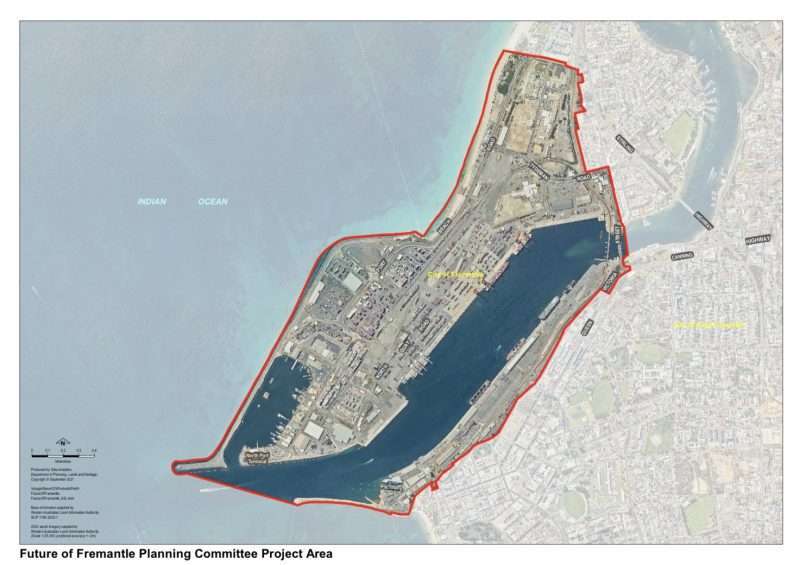
As you can see from the map, the project area consists of the Fremantle Inner Harbour and surrounds, including North Quay, Rous Head, the inner harbour waters; the east and west ends of Victoria Quay; and land associated with the Port in North Fremantle. The project area encompasses approximately 394ha, of which 262ha consists of land and 132ha consists of waterways.
The Fremantle Port Inner Harbour is vested to the Fremantle Port Authority Board for port-related activities, with the remaining area held in a mix of public and private ownership.
The Future of Fremantle project is undeniably exciting. The idea reflects what many Freo people have been demanding for some years – a vision to guide the future redevelopment of the Port, with the potential to create an urban setting that rivals some of the world’s most successful waterfront destinations.
As the Tender says, the Strategy and Plan process presents the opportunity to breathe new life into the area, transforming former port and industrial land into spaces that meet the needs of the community well into the future.
It’s also hoped it will deliver jobs, housing, infrastructure, spaces for leisure and recreation, and significant opportunities for investment and economic growth.
The Tender invites ‘bold thinking’ and a long-term outlook that contemplates what living and working in a city could be like late into this century and well beyond.
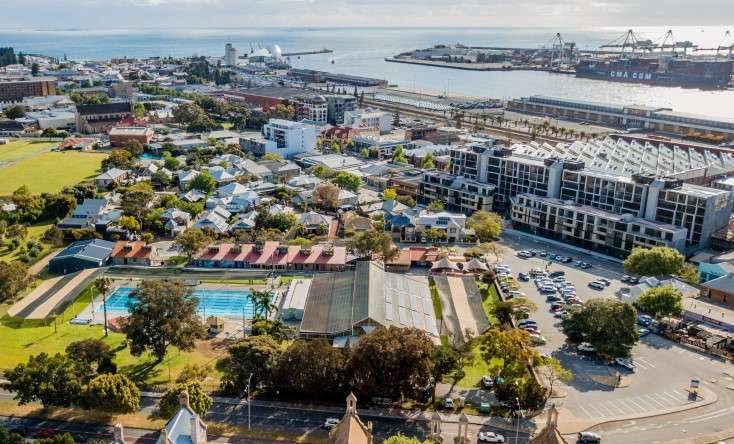
It asks some great questions –
* What lifestyles will we be leading?
* What are the future urban challenges?
* What jobs, industries and economic activities will carry through into Fremantle’s future?
* How do we build-in resilience?
* How can we ‘future-proof’ for technological change?
The Tender also states that planning for the redevelopment requires an appreciation of the strong affinity that many Western Australians have for Fremantle – not the least of whom, we would add, are Freo people themselves – and that any proposal to change the Port will attract widespread community interest and most certainly a diversity of views.
The project is said to be based on the following fundamental principles:
1. Authentic: Urban outcomes across the redevelopment area that respect and convey the cultural identity of Fremantle, including its Aboriginal and non-Aboriginal heritage, its local character and place identity.
2. Prosperous: Opportunities for value creation and smart investment that will contribute to a dynamic, sustainable economic and support job creation in diverse industries.
3. Liveable: Exemplary urban amenity that brings an enhanced quality of life; creating places where people can connect and have access to jobs, marine and land-based recreation and entertainment, open spaces, quality housing, education and health care.
4. Resilient: A forward thinking and risk-aware built environment that is able to safeguard the community’s quality of life when faced with urban challenges, such as climate change, technological change and the current pandemic, including consideration to energy security, food and water security, and community health and safety.
5. Diverse: A mixed-use and inclusive urban environment which offers choices in housing and a diversity of uses that appeal to a broad community and enables people to live locally.
6. Accessible: High levels of accessibility within the project area and to and from the area from other parts of the city, supported by a mix of transport modes for sustainable outcomes and an enhanced user experience.
7. Flexible: Flexibility in the planning of the project area that allows the built environment to modify and adapt over time in response to shifting circumstances, including market conditions, new urban challenges, and user demands.
8. Inclusive: The involvement of many voices and perspectives across government, industry and community to solve the challenges and contribute to shaping the future of the project area, with engagement processes used to find common ground and build consensus where possible.
What we sometimes forget, and need reminding about, are the various and significant other things happening around Freo, especially to the south.
The Tender emphasises the several projects underway or in planning that will need to be considered in the context of the Future of Fremantle project. These and any additional emerging and relevant projects will need to be integrated into the Future of Fremantle work.
The following descriptions of these other projects is taken from the Tender descriptions of them. They provide a convenient stocktake of what is happening on various fronts.
Westport

Work is underway on the Westport Program Stage 3 to develop a business case that will recommend to Government high-level designs and the best time and way to transition container trade from the Inner Harbour in Fremantle to the Outer Harbour in Kwinana.
The future of non-container trade, including livestock, roll-on/roll-off and breakbulk, has not been determined. The Westport Program is undertaking a high-level strategic review of non-container trade to understand how these functions should be provided in the future; either at Fremantle, Kwinana or an alternative appropriate location(s). Emerging from this work, Westport will be able to advise on the likely pathway for non-container trades leaving the Inner Harbour, as well as high-level advice on options for supporting industry and businesses relocating from Fremantle to Kwinana. Fremantle Port will continue to operate as Perth’s primary port in the meantime.
The planning processes for Westport and Future of Fremantle will need to run in parallel and closely interface, with Future of Fremantle tasked with ensuring the long-term future of Fremantle’s Victoria Quay, North Quay and surrounding land is considered early and provides adequate time to make way for repurposing the inner harbour land following the Port’s relocation.
The Future of Fremantle will assist the long-term development opportunities which will provide input for the economic and strategic rationale for Westport. The deliverables for Future of Fremantle will need to provide the following information for inclusion in the Westport Business case:
• changes in land value at Victoria Quay, North Quay and surrounding areas
• the long-term profile of costs and revenue to the State from the redevelopment of the Future of Fremantle project area
• the economic and social benefits anticipated from this redevelopment.
Global Advanced Industries Hub

The Department of Jobs, Tourism, Science and Innovation (JTSI) is responsible for implementing the WA Government’s commitment to transform the Western Trade Coast into a Global Advanced Industries Hub. Covering 3,900 hectares between Munster and Rockingham, the Western Trade Coast includes the Australian Marine Complex (AMC), Kwinana Industrial Area, Rockingham Industry Zone and Latitude 32.
Delivery of the commitment will involve the development of an economic framework for the Hub with a focus on industry development and attraction, land and infrastructure, and skills and workforce development, among other opportunities.
JTSI is a Westport Program Partner and the development of the economic framework will have a number of interdependencies with the Westport Program. The development of the economic framework will also have synergies with Future of Fremantle. JTSI will share key relevant outputs with the Future of Fremantle project team for consideration, particularly in relation to the current industry profile in the Western Trade Coast and potential opportunities for future industries locating in the Western Trade Coast and Future of Fremantle area.
JTSI also led the development of the AMC Strategic Infrastructure and Land Use Plan to identify the short, medium and long term upgrades required to guide the AMC’s development as a nationally significant industrial area for the defence, marine and resource industries. This plan was published in 2020 and ensures the AMC has the long-term capacity to meet the future needs of the defence industry, while continuing to support the marine and resource sectors that currently use it to undertake major projects in WA.
JTSI is now leading the delivery of the AMC Integrated Infrastructure Program and other studies to guide the next stages of infrastructure development at the AMC and build on the concepts developed in the Strategic Infrastructure and Land Use Plan. Plans to support the marine industry in the AMC, as identified in the Strategic Infrastructure and Land Use Plan and the Integrated Infrastructure Program, will be directly relevant to the Future of Fremantle project team’s consideration of plans for the marine industry in Fremantle.
North Fremantle Precinct
The Department has led the North Fremantle Development Precinct Technical Advisory Group to progress planning for the North Fremantle precinct (being the area of land between Port Beach and Curtin Avenue, and located to the north of Tydeman Road and to the south of Walters Road). The Contractor engaged in relation to this Request will be required to support the Department in finalising the work of the Technical Advisory Group to arrive at a preferred land use and planning response for this precinct.
City of Fremantle Strategic Community Plan
The City is conducting a review of its Strategic Community Plan 2015-25 and as part of this process will be engaging extensively with the community in early 2022. Feedback from this engagement may be made available and considered to help inform the Future of Fremantle project.
Swan River Crossings Project
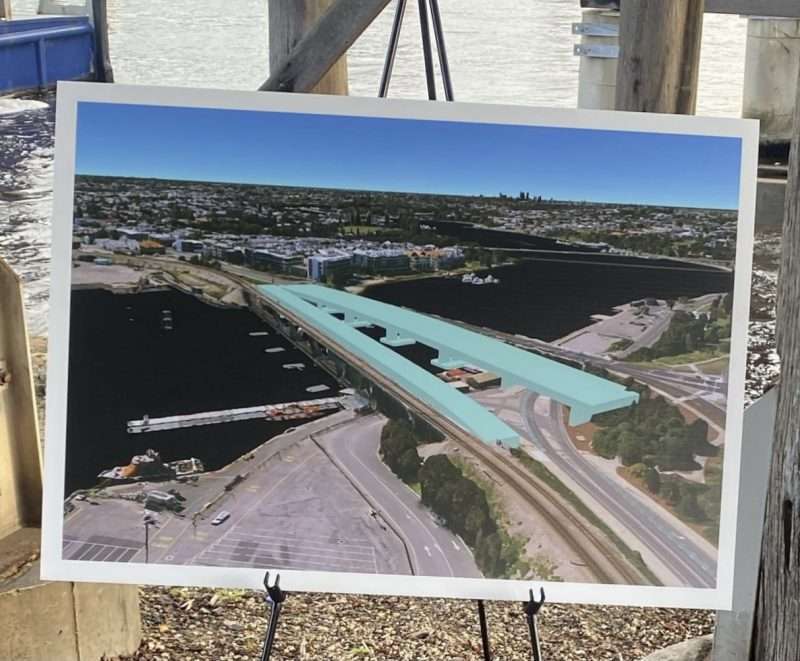
The Swan River Crossings project, delivered by Main Roads WA, will see the replacement of the Fremantle Traffic Bridge across the Swan River and the construction of a new rail bridge. The project is currently in the development stage with more detailed design being progressed, along with further investigations around construction, environmental impact, scheduling, and costs. The project will deliver improved road, rail, pedestrian and cycling paths, across the Swan River, while also increasing marine safety and navigational clearances for boats.
The Future of Fremantle project will need to respond to the new bridge designs for a coordinated and integrated transport and planning outcome.
Victoria Quay Waterfront

In 2018 the Victoria Quay Waterfront Steering Group was formed to chart a new vision for Victoria Quay. The Steering Group, chaired by Fremantle MLA Simone McGurk, met throughout 2019 to review existing planning work, undertake a high-level opportunities assessment, and recommend potential development and improvements to revitalise Victoria Quay and improve links with Fremantle.
The Steering Committee recommended six priority projects:
1. Cliff Street entry – Improve entry with simplified road design to minimise number of rail crossings
2. A Shed Redevelopment – Refurbish A-Shed for commercial and hospitality enterprise
3. Enhance cruise ship visitor experience – Retain existing terminal but improve connections with city/railway station
4. Film Industry hub – Investigate opportunity to create a film industry hub on Victoria Quay
5. Connect Bathers Beach to Slipways precinct – Create a public connection between Slipways precinct (near WA Maritime Museum) and Fishing Boat Harbour via TAFE courtyard and Bathers Beach
6. Place activation – Improve public realm with improved street furniture, wayfinding, public art, landscape, playground infrastructure
The Tender notes some of the recommendations are short-term and can be realised such as the recent repurposing of A Shed into a bar and eatery (Gage Roads Brewing Company), whereas others are intended to proceed over a longer-term horizon. To implement all Steering Committee recommendations, further work is needed to resolve detailed design and implementation frameworks. This work does not form part of the Tender Request, however the appointed consultant team to this Request will need to stay abreast of this work so that there can be alignment and a coordinated approach. Presently, we note, there also appears to be some doubt surrounding the realisation of a film industry hub on Victoria Quay.
Fishing Boat Harbours Masterplan
Department of Transport is developing a masterplan covering the Fremantle Fishing, Challenger and Success Boat Harbours to create a new vision to:
• enhance the commercial viability of maritime operations and the overall maritime experience for all users
• improve access to the harbours and their connections to Fremantle Port and the Fremantle city centre
• inform the program of public betterment works and initiatives to promote private investment and business development.
The Masterplan also aims to improve connectivity to the harbours and catalyse greater commercial and tourist offerings along the three major waterfronts, aligning it in principle with the Freo 2029 strategic plan objective to ‘unite the city with a reinvigorated waterfront ‐ port, beach and fishing boat harbour’.
In Summary
As we say, the Tender Request reveals a demand for vision and ambition in the port areas. In doing so, the integration of the redevelopment area with the Fremantle CBD, North Fremantle and Freo more generally will be critical considerations.
All in all, though, the project is exciting.
In summary, the objectives to be addressed by the Future of Fremantle Economic Development Strategy and Land Use Plan include:
• to create a compelling project vision and guiding principles that are grounded in the identity and stories of Fremantle and the site’s history, as well as the aspirations of the community and key stakeholders
• to explore exciting new economic opportunities and redevelopment possibilities for the inner harbour and surrounding area
• to recommend economic development strategies for a vibrant and growing economy that will create new local jobs when port activities are potentially relocated
• to develop a well-considered strategic framework to guide the delivery of innovative, resilient and sustainable redevelopment of the project area
• to constructively engage with a wide range of stakeholders, providing opportunity for diverse voices and perspectives to be heard to help inform and guide the process and inform project outcomes.
We await the next steps, particularly that part of the envisioning process that engages the Fremantle community.
* By Michael Barker, Editor, Fremantle Shipping News
PLEASE HELP US TO GROW FREMANTLE SHIPPING NEWS
FSN is a reader-supported, volunteer-assisted online magazine all about Fremantle. Thanks for helping to keep FSN keeping on!
** And don’t forget to SUBSCRIBE to receive your free copy of The Weekly Edition of the Shipping News each Friday!
